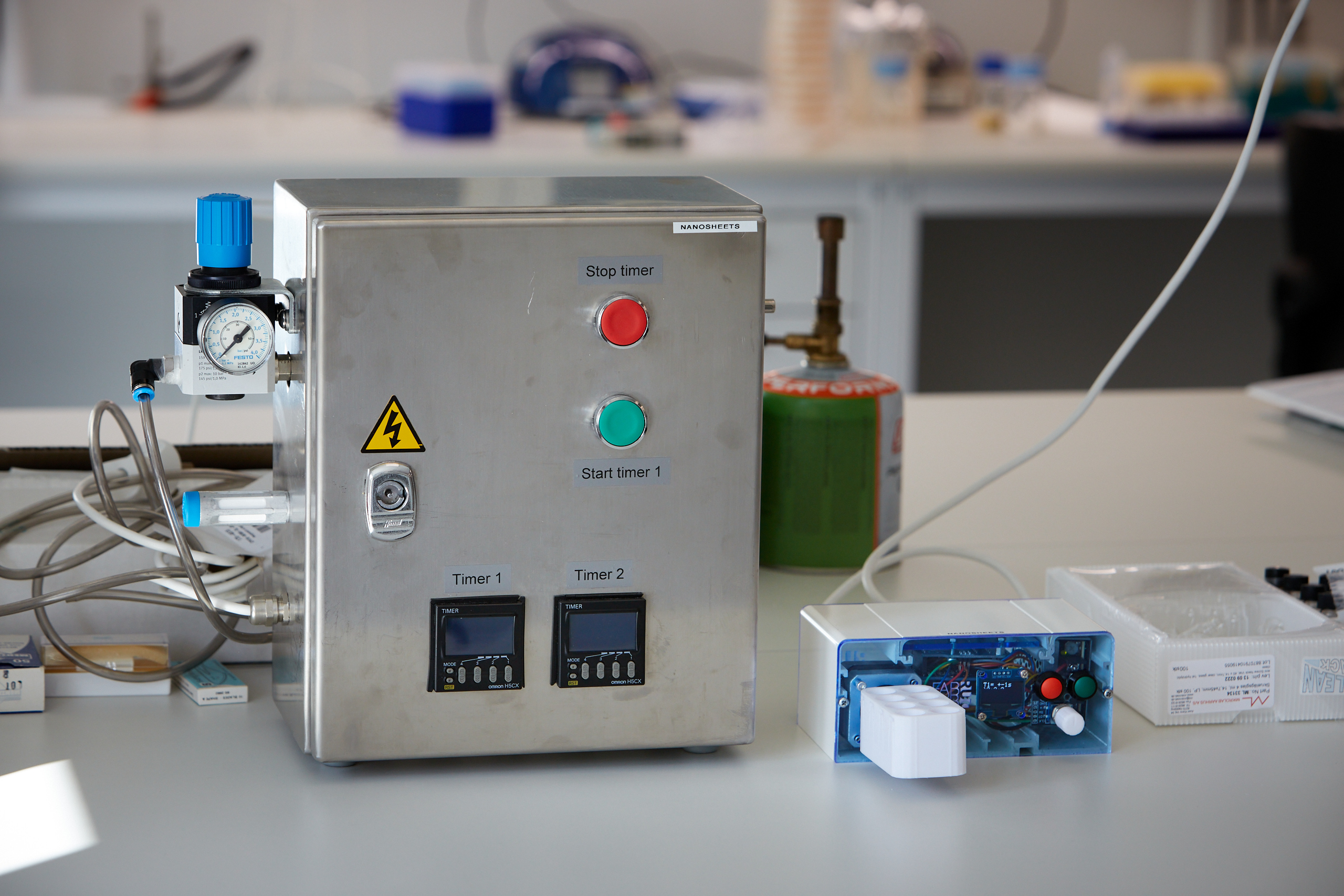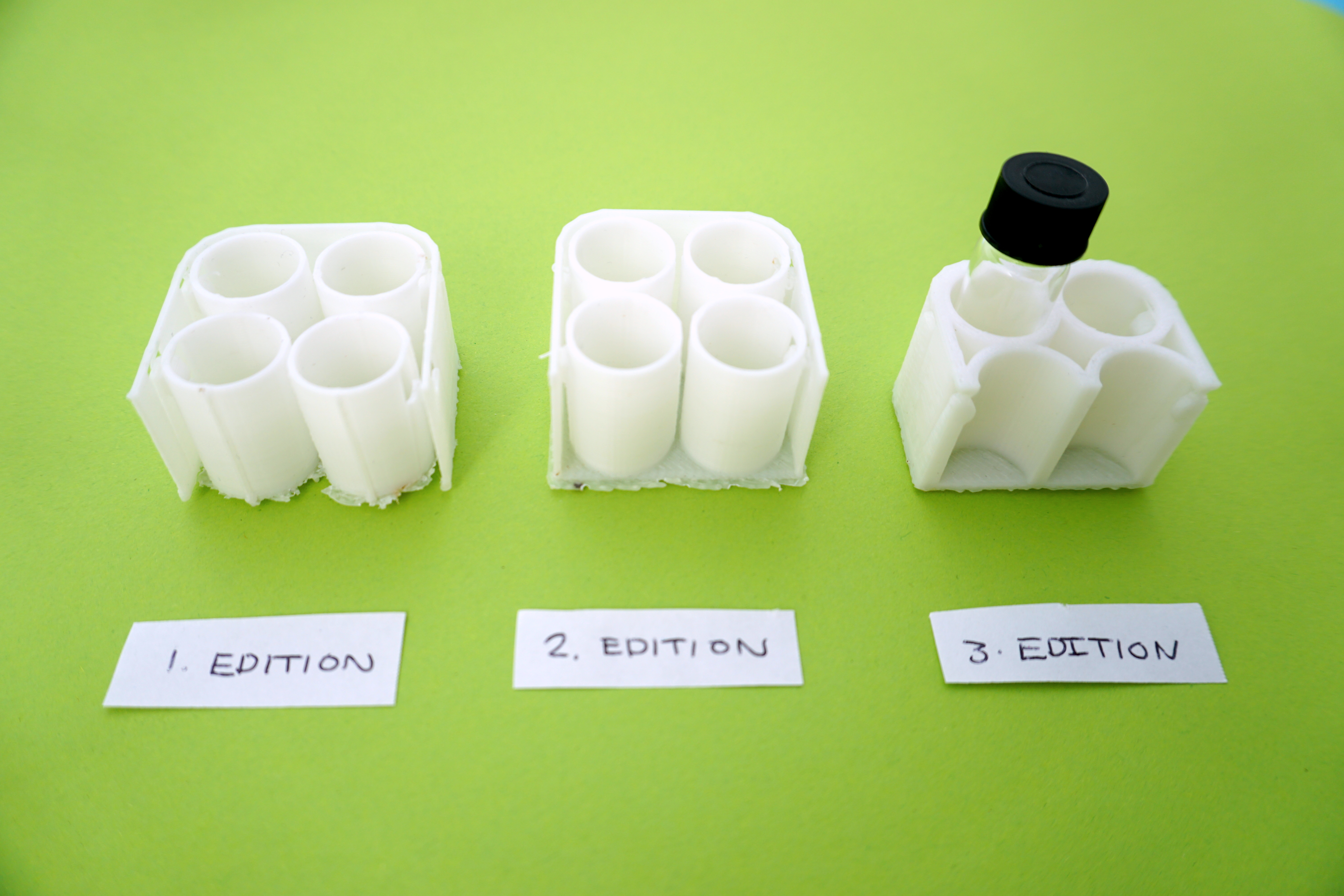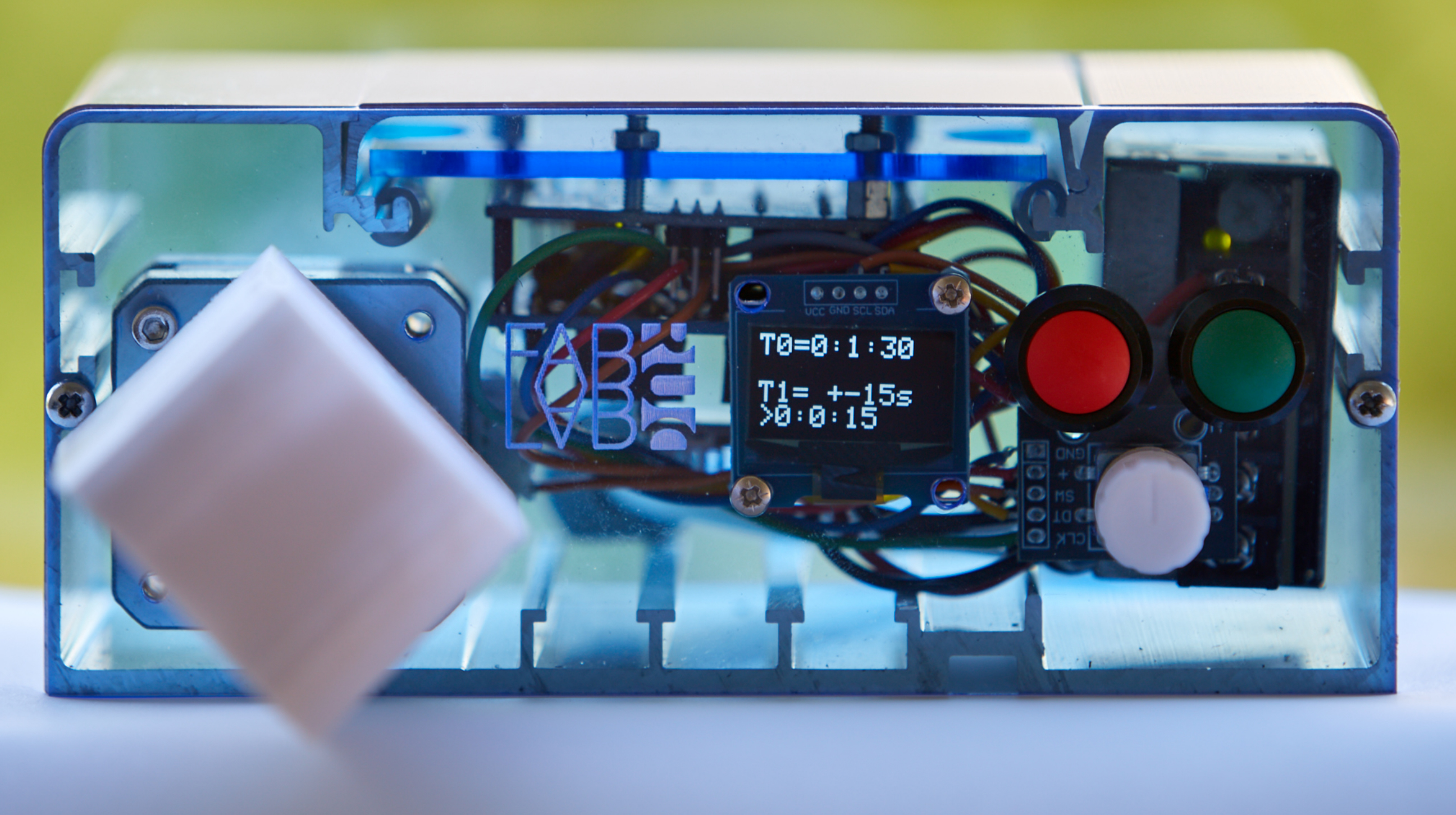|

Sometimes even very expensive and well build equipment breaks.
This recently happened to researcher Biljana Mojsoska, a chemist at Roskilde University.
She was working with nano sheets, an anti-bacterial coating for medical surfaces, as her machine stopped working.
Would it be possible to build a much cheaper and easier to fix version of Biljana Mojsoska machine?

Using Rapid Prototyping as a method and the tools and technologies we have at hand at FabLab RUC
we accomplished to build a machine that delivers the same result
as the broken and expensive one.

This small simple machine came into the world in a matter of hours.
The first prototype was sent away to
Biljana Mojsoska and returned with feedback stating that vibrations caused the nano sheets to break by the
end of the machine cycles.
In the second iteration, a lot of different experiments were made to try to stop the vibration.
Finally, a geared servo motor caused the vibrations to be unnoticeable.

This machine is used by Mojsoska in research with peptoids and bioinspired polymers.
Bioinspired polymers can be readily functionalized and thus used as coating on medical surfaces.
In her lab, they synthesise peptoids that later are exposed to 3-5 days rotation cycles
in the order to maximize the nano sheet production.
Nano sheets are formed simply by alignment of the single peptoid chain in the water-air surface
where the hydrophobic side chains are oriented in air and the hydrophilic side chains in water.
When the monolayer is exposed to compression, a bilayer is formed in the interior core resulting in nano sheets which
are about 3 nm thick and up to 100 micrometers long.


|







